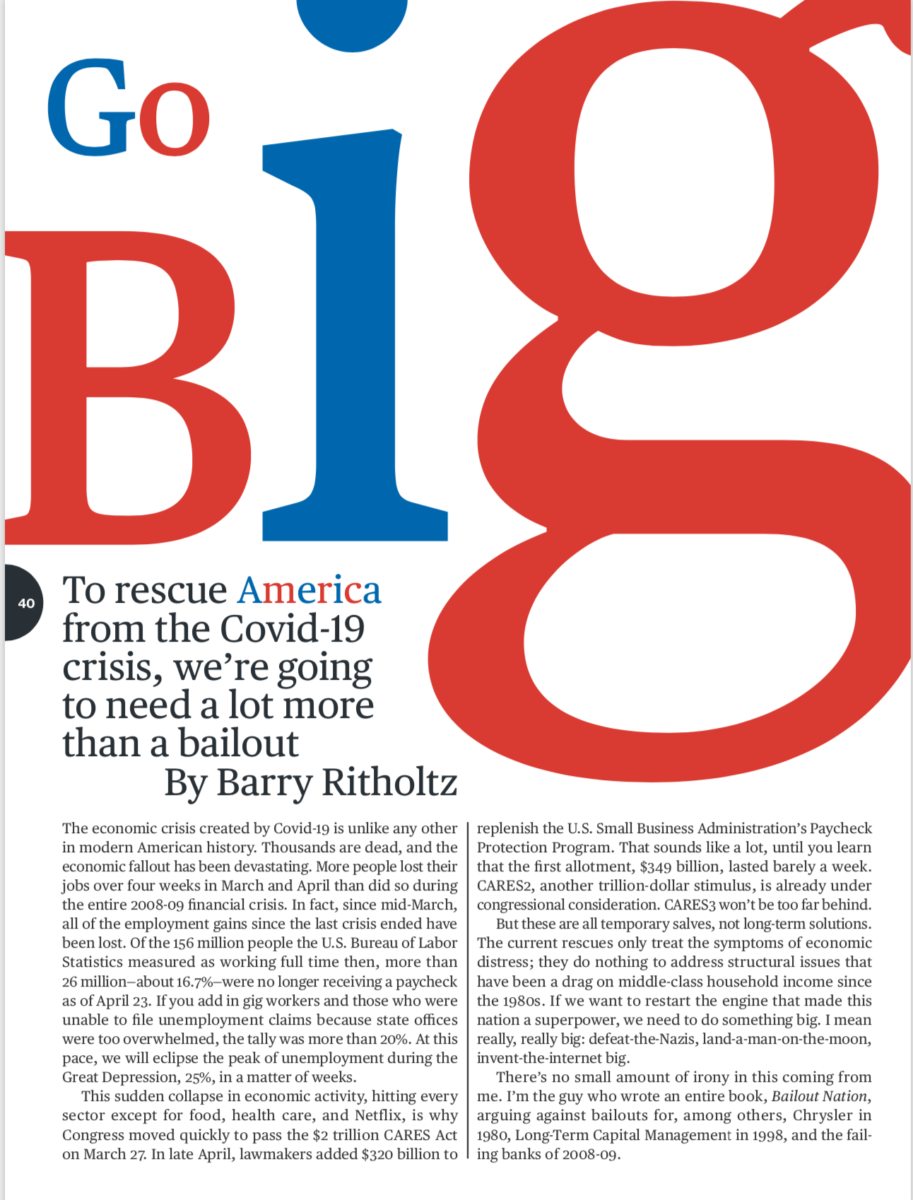On Thursday, I mentioned my beastly BusinessWeek piece on economic rescues: It’s Time to Go Big.

For those of you who don’t want to plow through a 2500 word opus, here is the reader digest version: 500 words in 10 bullet points.
Go Big (TL;DR version)
1. American style capitalism has always been a Joint Venture. It’s not socialism or communism, it is government creating broad platforms for business to build upon.
2. Consider all the industries that got started with the assistance of Uncle Sam or the States: A superior U.S. Patent system helped Eli Whitney’s Cotton Gin; Eminent domain made cross country railroads feasible; Congress funded the first telegraph; States funded canals; NYS created municipal bonds by giving a monopoly on the Hudson River to the developer of a viable steam engine; the War Department developed radar; The Navy limited radio frequencies, leading to auctioning frequencies / commercializing radio. The Pentagon is why we had Mainframe computers; Interstate Highway System led to a shipping industry, automobile culture and rise of suburbia; NASA = the integrated circuit; DARPA created the forerunner of the internet; (full list here).
3. The common thread all of these industries had was the government was the earliest funder, the biggest risk-taker who had the longest time horizon. The innovation economy + the private sector built on these platforms. The private sector could not have created the patent system or radio or the internet but they could commercialize these and build new business models on these platforms.
4. This approach worked well for the first 200 years of U.S. history. The new sectors and industries created millions of middle class jobs; these were typically well paying with good benefits. After WWII, the G.I. Bill led to 7.8 million veterans getting a college education.
5. For a variety of reasons, we abandoned a very successful model, replacing it with one that was not as successful for all economic segments of U.S. society.
6. From around 1980s forward, these joint partnerships stopped. So too did many of the better middle class job creation. In their place was more of a bifurcated jobs market: Either you had an advanced degree and/or a STEM job, or you didn’t. The middle class began to shrink.
7. Government became demonized, less involved. Asia, with a strong belief in robust industrial policy, captured much of the world’s economic gains. US infrastructure decayed; new infrastructure thrived in Asia. In the United States, the gains were increasing captured by the top few percent, especially in terms of tax cuts and stock gains.
8. In response to the Great Financial Crisis of 2007-09, Congress went AWOl, and what we got instead from the Federal Reserve was a primarily monetary response. It saved the banking sector, but also made everyone who owned commercial and household real estate, and especially stocks and bonds even wealthier. People became mad; Nationalism/populism expanded.
9. The Covid-19 Pandemic revealed how much inequality had expanded in the USA since the Great Financial Crisis. We became a nation of Haves (30%), Have Nots (50%) and Haves More (19%) and Haves Most (1%).
10. The lockdown revealed this in the starkest of terms. The attempts at replacing lost wages only served to remind us what we as a nation have not been doing for 30 years: Creating solid middle class jobs that one can sustain a family upon.
My solution is to return to our long history of joint public-private ventures, like Railroads, . semiconductors, and the internet.
Thats the TL;DR version; if you are interested, the full version is here.

